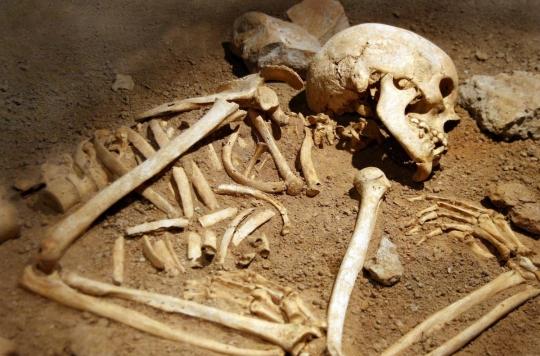The disease is believed to have affected between 9 and 14% of British adults in medieval times.

- The researchers used X-rays and CT scans, an imaging technique that scans and reconstructs 2D or 3D images of anatomical structures.
- Until then, cancer was presented as rare at that time, affecting less than 1% of the population.
- Today, cancer is present in nearly half of all people who die, whether it is the cause or not.
Cancer is often singled out as a disease of our century. A new study published on May 4 in the journal Cancer ensures however that this pathology was already present from the Middle Ages. Researchers from the prestigious British University of Cambridge have examined 143 skeletons dating from the VI to the XVIand century in and estimate that between 9 and 14% of British adults in medieval times contracted cancer.
New techniques for analyzing skeletons
Researchers estimate that the prevalence of cancer in medieval times is about ten times higher than previously thought. Previous research has suggested that the cancer is rare, affecting less than 1% of the population, but these tests have only looked outside the bone for lesions. In this new study, the researchers went a step further and used X-rays and CT scans, an imaging technique that scans and reconstructs 2D or 3D images of anatomical structures. “Thanks to the CT scan, we were able to see cancerous lesions hidden inside a bone that looked completely normal on the outside”, assures Dr. Jenna Dittmar, co-author of the study.
Among these skeletons, many of them therefore showed no signs of cancer, but this does not necessarily indicate that the individuals did not contract it. “The majority of cancers form in soft tissue organs that have long been degraded in medieval remains. Only some cancers spread to the bones, and, among them, only a few are visible on its surface. We therefore searched the bone for signs of malignancy”, says Piers Mitchell, researcher in the Department of Archeology at the University of Cambridge and lead author of the study. Between a third and half of people with cancers of these soft tissues will see their tumor spread to their bones. The research team found signs of malignancy in the bones of five people, with a minimum prevalence of 3.5%. “We combined these data with evidence of bone metastases from our study to estimate cancer rates for medieval Britain.”, continues Piers Mitchell.
Today, cancer is present in 40 to 50% of people who die
These new analyzes revealed a hitherto underestimated prevalence of cancer in medieval times. “Until now, the most important causes of poor health among people in the Middle Ages were thought to be infectious diseases such as dysentery and bubonic plague, as well as malnutrition and injury from accidents or war.details Jenna Dittmar. We must now add cancer as one of the major classes of disease that afflicted people in the Middle Ages.” However, the researchers warn that the sample size is limited and that diagnosing cancer in people who have been dead for centuries is complicated. “We need new studies using CT scans of apparently normal skeletons in different regions and time periods to see how widespread cancer was in key civilizations of the past.”, concluded Piers Mitchell.
The prevalence of cancer is much higher today than in the Middle Ages and researchers estimate that between 40 and 50% of Britons have cancer at the time of their death, whether it was the cause or not. . This disease is therefore between 3 to 4 times more common today due, in particular, to pollutants that have become ubiquitous since the industrial revolution, our lifestyles and the lengthening of life expectancy which gives cancer more time to develop.
.















